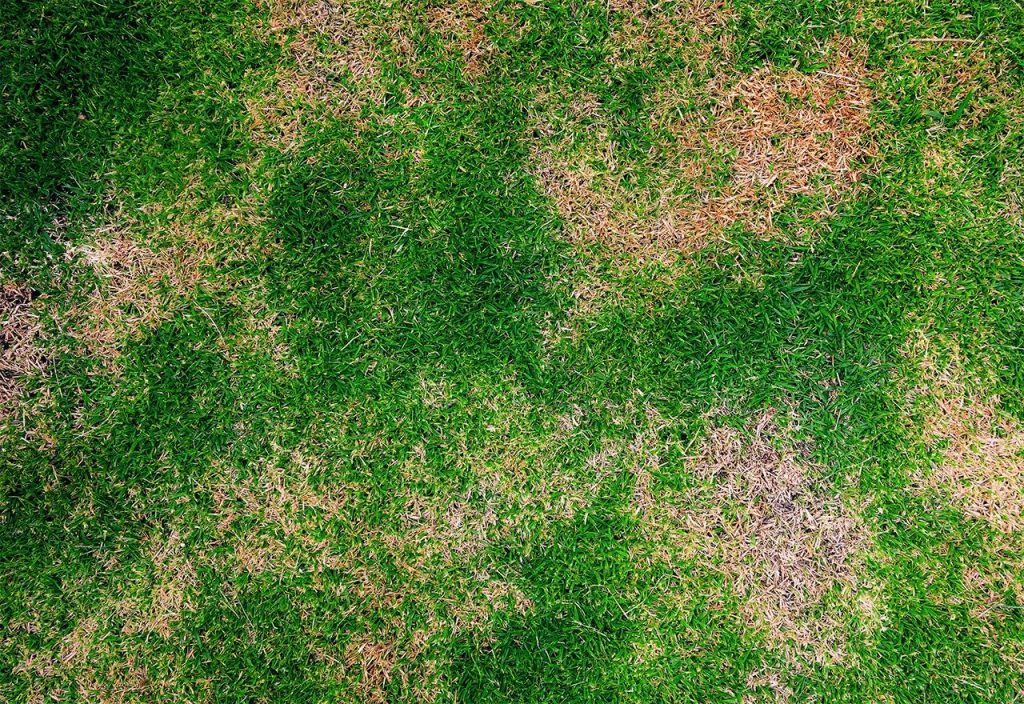The facts
Lawn grubs are unfortunately a common pest to infiltrate Australian lawns, feeding on lush green grass and turning it brown and brittle. These pests are sometimes referred to as ‘Armyworms’ and make short work of your lawn before moving on to the next.

Before your turf gets to you, it is given a precautionary treatment against lawn grub, but this treatment will not last forever, so it’s important to be able to recognise the signs of an infestation before things get too dire.
Lawn grub lifecycle
There are four stages to the lawn grub lifecycle: egg, pupa, larvae, adult.
- Egg
- Pupa
- Larvae
- Adult
The lifecycle – from egg to adult – is completed within the span of only 23-27 days, meaning it’s very important to act quickly. Eggs will hatch within 2-4 days of being laid and will spend the next 14-22 as larvae feeding on and causing damage to your turf.
As Larvae, lawn grubs can be distinguished from other caterpillars by the three pale stripes which run down the back and sides of their bodies. These stripes are a constant feature across all species although colours may vary between brown, grey and green.
As an adult, lawn grubs take the form of small grey-brown moths. These moths are most active on humid nights and the females can lay up to 1000 eggs, so it is important to act quickly.
The lifecycle – from egg to adult – is completed within the span of only 23-27 days, meaning it’s very important to act quickly. Eggs will hatch within 2-4 days of being laid and will spend the next 14-22 as larvae feeding on and causing damage to your turf.

As Larvae, lawn grubs can be distinguished from other caterpillars by the three pale stripes which run down the back and sides of their bodies. These stripes are a constant feature across all species although colours may vary between brown, grey and green.
As an adult, lawn grubs take the form of small grey-brown moths. These moths are most active on humid nights and the females can lay up to 1000 eggs, so it is important to act quickly.
Signs that your turf may have lawn grubs
Your turf loves the warm weather of Australian summertime. It becomes lush and green under the sun, growing quickly and with vibrancy – a sight to behold. But while you’re admiring your lawn, lawn grubs are admiring it too.
Lawn grubs have good taste – preying first on the very healthiest and most beautiful of lawns – so, come summertime when your grass is particularly green, make sure to keep an eye out for the signs of an infestation.
Possible signs that your lawn may have lawn grub include:
- Brown and dry patches
- Higher prevalence of moths at night
- Nests appearing under the eaves of your home
Treatment
Treating lawn grubs does not have to be an expensive or time-consuming experience. There are many pesticide products available to protect your lawn, and we have a few tips for choosing the right one for you.
For a cost-effective option, look for a pesticide containing bifenthrin. Bifenthrin pesticides are specifically a spray pesticide and will protect your lawn for an average of three months.
For a more long-term treatment, consider using acelepryn. Unlike bifenthrin products, acelepryn is a granulated insecticide so it takes a little longer to apply to your lawn, but the extra effort means you have protection for up to six months.
Instructions for application vary across brands so it is important to carefully read the directions of use and safety information.
Tips for spraying for lawn grubs:
- Spray in the late/afternoon or evening
- Reapply the spray 7-10 days later to break the lifecycle
- Avoid spraying if it has been raining or is likely to rain – this reduces the longevity of the protection against lawn grubs
- After spraying your lawn, give any brown patches a dose of fertiliser to help them recover
Fortunately, if your lawn falls prey to lawn grub one year, it is very unlikely for them to make a reappearance the next year.

